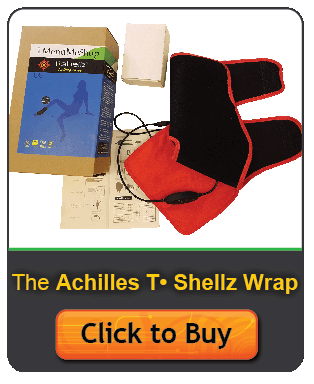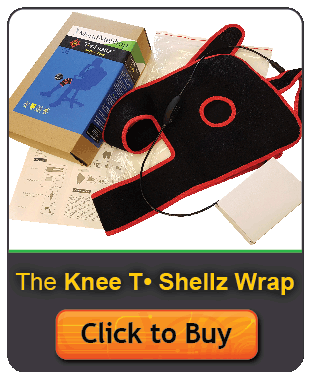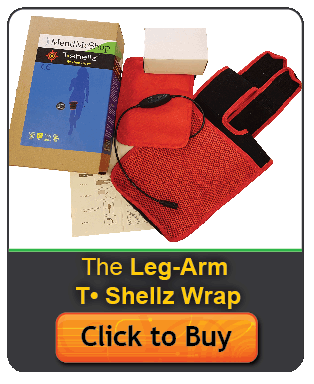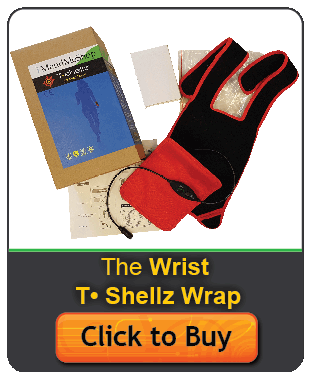|
|
These tendon and muscles work to help to stabilize your knee. Hip flexors, two muscles that work together to work your knee are the rectus femoris is the longest quadriceps muscle; it connects your hip and knee joint. And, the sartorius muscle is a rotator of the tibia that works with your quadriceps to help straighten your knee and flex the hip - (contract, relax, flexed and extended), you are able move your knee from a bent position to a straight and move your knee from a straight to a bent position (as seen in kicking motions). The quadriceps muscles in the front of the leg, hamstring muscles in the back, and adductor muscles on the inside are responsible for the trunk and legs' multi-directional movements. The muscles primarily responsible for bringing the leg forward from the hip are the psoas and rectus femoris. The hamstring and gluteus maximus bring the leg behind the body from the hip. The adductor magnus and adductor longus draw the leg to this inside of the body. The gluteus medius, gluteus minimus and tensor fascia lata bring the leg towards the outside of the body. They are also the group of muscles responsible for stabilizing the hip, especially with weight bearing activities. When straining a muscle in the thigh, it is common that more than one muscle and possibly the associated tendon can be affected. There are varying degrees of muscle strain injuries. Some are mild and can heal well with conservative treatment. Severe muscle injuries, also known as ruptures, are usually a result of a traumatic injury such as a fall or an accident and may accompany a fracture. Symptoms of a Quadricep Muscle Strain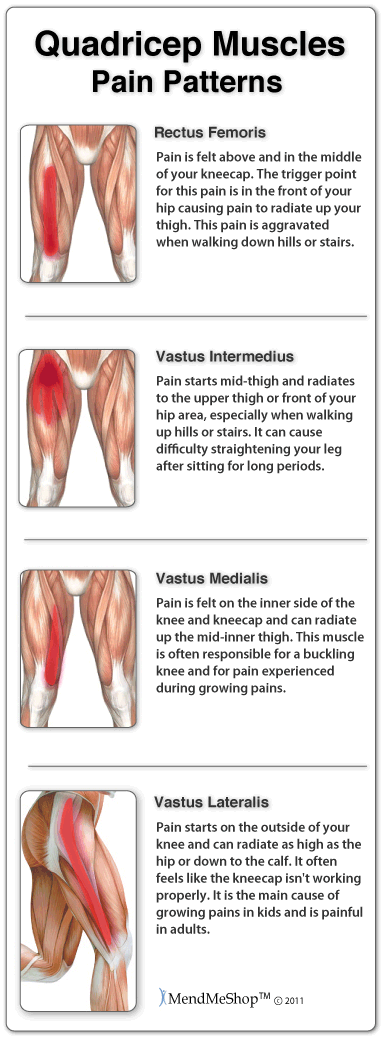 Thigh muscle pain symptoms can be mild to extreme based on the level of your injury. A sharp pain or pulling may be felt in the area of the pull, strain or tear. This can radiate along the length of your quadriceps muscle up to your hip and pelvis, and/or down through your knee. You will feel tightness, tenderness and/or muscle spasms in your thigh (quadricep) muscle after and acute injury or during active and resistive movements. Point tenderness may also be felt, especially when touched. If you have a chronic injury, you may feel more of a dull ache that lasts for long periods of time. You may experience stiffness or decreased range of motion, such as difficulty fully flexing your knee, or stretching your thigh. Tightness in your rectus femoris muscle can pull your pelvis forward creating a sway back and causing hyperextension in your knee. This is very common in gymnasts, ballerinas and soccer players. Swelling in your quadriceps muscles is a result of your tissues becoming inflamed; this normally occurs just above or below a more severe quadriceps strain or tear. Warmth and redness may accompany swelling in severe cases. You may also feel a gap, dent, bulge or thickening in your muscle or tendon that is not normally present. Weakness or complete loss of function of your quadriceps muscle can also be experienced as a result of a quadriceps strain. This along with your other symptoms may make it difficult for you to walk or run and can result in you walking with a limp. 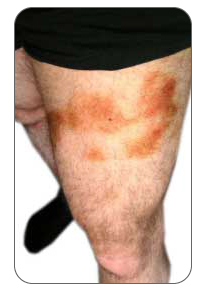 Occasionally, bruising (broken blood vessels) and discoloration (black, blue and/or purple) over your quadriceps muscle may appear immediately or after a few days with severe quadriceps strains. Grinding and crackling (crepitus) in your knee can result from improper tracking of your kneecap. A popping or snapping sensation on the front of your thigh can often be heard and felt when your quadriceps muscles are tearing. This doesn't happen very often. Thigh Muscle Pull SeverityThere are three grades of quadriceps muscle strain injuries. Grade 1, Minor - thigh muscle pain involve lengthening of your quadriceps muscles which results in slightly pulled or excessively stretched muscles, or very tiny tears in your muscles. You will feel some specific area pain, tightness or muscle spasms in your thigh, just above or below your injury, but you shouldn't experience any swelling or a major loss of strength. These symptoms may lessen with activity, but will return with a extreme pain afterwards. You may find it difficult to extend your knee or flex your hip, and you may walk with a slight limp. Grade 2, Moderate - thigh muscle pain are more painful and involve a partial tearing of the quadricep muscles, tendons, and/or at the tendon attachment to your bone. You will generally experience some pain that radiates through your leg during activity, while straightening your knee against resistance, or when you touch your thigh. Swelling, stiffness, decreased strength and range of motion (may not be able to fully bend your knee) will be apparent and can also cause you to limp. You may also experience some bruising due to bleeding within the injured muscle. 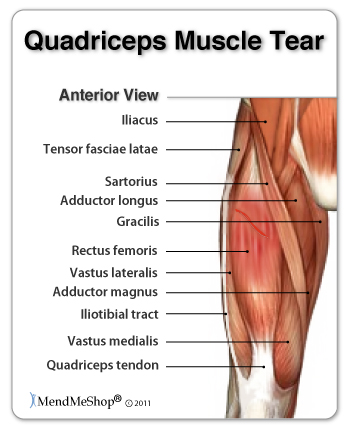 Grade 3, Severe - thigh muscle pain involve a complete tear (rupture) of your one of your quadricep muscles. Where your muscle belly attaches to your tendon or where your muscle belly rips in 2 separate pieces. The type of thigh muscle injury is very painful. You will may experience a burning or stabbing pain, a lot of swelling in the muscle and minimal strength, which may prevent you from walking without crutches or make it difficult for you to move your leg (can't do a straight leg raise). Discoloration and widespread bruising in the injured area as a result of bleeding in the muscle tissue can also occur. You may notice a break/bulge in your normal muscle outline that makes a gap under your skin where the muscle has come apart. The majority of thigh muscle injuries are a result from jumping which causes sudden stretching or repeated contraction. Acute tears or avulsion fractures tend to occur following a direct blow to the muscle during kicking, a sudden burst of speed, pushing off to jump, going uphill or falling on a partially bent knee. Tears can also result from tendinosis or previous knee/tendon surgeries (knee replacements, ligament surgeries, especially the ACL). If your quadriceps tendon tears your kneecap will lose its anchoring support in your thigh, and your knee cap will move down towards your foot. You won't be able to straighten your knee or put any weight on your leg, as your body won't be able to hold your knee in a straightened position. Causes of a Thigh Muscle (Quadriceps) Strain Quadriceps muscles are normally injured during very active sports where there's sudden speed increase and/or explosive jumping (running, track & field, baseball, football), a sudden change of direction and/or strenuous kicking motions (squash, tennis, soccer, karate, kickboxing), or heavy overloading (weightlifting or leg presses on machines). During dynamic activities you often load your hip joint by up to eight times your body weight, which can put a lot of continuous pressure on your quadriceps. Muscle exhaustion and fatigue decrease your strength, power and endurance which increase your risk for injury. Overstretching, overexertion and overuse of your quadriceps muscles occurs frequently in sporting activities and/or daily life. When you have not warmed-up and stretched properly before moving, your muscles aren't ready for the stress, therefore your chances for injury are increased. Doing too much, too soon, too fast, or exercising and moving about in cold weather, puts you at even more risk for thigh muscle injuries. Sometimes you will get a pulled thigh muscle doing very simple tasks like jumping off a higher surface, or running after your kids or the bus. Utilizing poor technique (under-striding: running at full speed then slowing down too quickly), improper equipment (old shoes) or hard and uneven training surface during activities will often put your body at a higher risk for injury. These will also make you feel more tired as the inefficient movements require you to use more energy to complete tasks than required.  Repeated quadriceps injuries are very common. You lose the function and strength of your thigh (quadriceps) over time, and encourage inflammation, scar tissue and calcification development, so these damaged parts never heal properly. Impatience and not letting injuries heal, so your body can return to peak performance level is often the reason for repeat injury. Previous injuries to your lower back, pelvis, thighs, hips, knees, and/or calf can also encourage a thigh muscle injury (especially if they haven't healed properly). The above causes are often self-imposed; which means with a little self-management you can have some control over the outcomes. However, the following conditions can make you more prone to quadriceps injuries and are often the cause of a number of the above situations. Muscle imbalances or weakness in your muscles (especially in your quadriceps and hamstrings, or your lower back and pelvis muscles) can cause strength differences and poor coordination that results in pulled quadriceps muscles. Your thigh muscles are normally stronger they your hamstring. There are cases where the hamstring are stronger, common with runners and teenage girls often have a vastus lateralis muscle that overpowers their weaker vastus medialis muscle. This occurs because their muscles can't keep up with the widening of their hip bones. If no stretching or extra strengthening of the vastus medialis is done, it can result in knee locking, kneecap tracking issues and other knee discomfort. 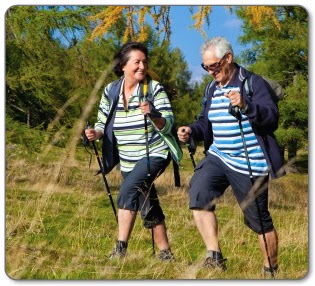 Tight quadricep muscles often result from not stretching properly before your activities. However, shortened and tightened muscles, spine stiffness and poor flexibility can be hereditary and/or a side-effect of aging; this is seen more frequently in men than women. All of these can cause a lot of pressure on your body (injured psoas and iliacus which causes weakness in hip flexion, restricts your lower back movement and the femoral nerve) and require a lot of work on your part with daily stretching. Alignment issues, leg length differences, or which affects the way your foot hits the ground when you walk (overpronation or supination) can put a lot of stress on your quadriceps muscles and result in a pulled thigh muscles. These often add to the imbalance in your quadriceps and hamstrings. A general summation of the most common causes of a quadricep injury is as follows:
Other factors that can put extra tension on your quadriceps and increase your risk of injury to your thigh muscles would be:
Diagnosing a Quadricep StrainTo help your doctor give you a diagnosis, he/she will begin with your medical history, current condition and symptoms. He/she will ask how much pain you are having, if you heard a popping noise when you first experienced your injury, how long you have had the type of symptoms and limitations that you are experiencing. Further details will be requested - such as about what brought about your problem, when it started, and whether or not you have ever had treatments for this or a similar condition in the past. All this information will be very helpful in assessing your injury. A physical examination done by your doctor will look and feel the muscles, bones and other soft tissue in and around your knee and thigh (quadriceps muscles), as well as your entire leg/knee, pelvis and lower back, to evaluate sameness (symmetry), recognize differences and identify pain and tenderness. This will help in the discovery of any abnormalities such as mild or severe inflammation, fluid, bruising, bone or tissue deformity, and leg length discrepancies. He/she may ask you to complete a series of flexing and extending leg movements to see what motions cause pain, weakness, tightness, or instability. Your doctor will also likely test for the grade of muscle strain and try to identify any muscle imbalances. Generally with a strain you will experience resisted extension and pain, whereas with a tear you will not be able to complete a straight leg raise. The physician will also evaluate your feet and gait (the way you walk) to determine if you overpronate, or have other alignment issues. Most Common Quadriceps Injury Diagnostic Tests:  Most grade 1 or 2 quadriceps strains don't require diagnostic testing. The severity of quadriceps injuries can often be missed, hidden or underestimated because swelling and bleeding can occur deep within the muscle. Without a diagnostic test, it can be difficult to separate a fractured kneecap from a quadriceps tendon tear. X-rays will provide a two-dimensional image of the overall structure of your upper leg (pelvis, femur and knee). They are helpful in pointing out instability, fractures, abnormal bone shapes (bone spurs, calcifications or cysts, joint degeneration), and/or other leg problems.  MRIs (magnetic resonance imaging) will provide more detailed information and will help the doctor see soft tissues in and around your area of injury (muscles, tendons, ligaments, fascia, and other connective tissues). The accuracy of an MRI will most likely provide your doctor with plenty of information to determine the grade of your thigh muscle tear. The MRI will also determine if there is additional ligament or tendon damage, inflammation, tendinopathies and many other associated conditions. Should you seek medical attention?This is up to your discretion; however any continued discomfort in your thigh area should be investigated. If you continue to experience the thigh muscle related injury symptoms and have tried the suggested conservative treatments for 2 -3 weeks, it is recommended that you seek professional medical attention. It is recommended you seek immediate attention if you:
Preventing Quadriceps InjuriesIt is always better to prevent injuries rather than try to fix them after they happen, however that is not always the situation. A thigh muscle strain can be difficult to prevent as your major symptoms may start long after you've had the condition. In any case, there are a number of things you can do to keep yourself healthy and prevent further damage. 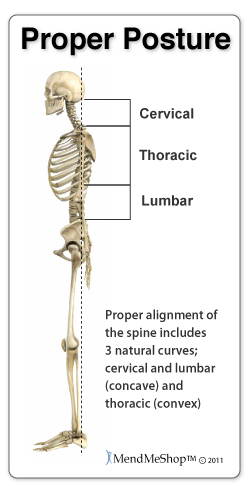 Maintain a strong and proper posture, and wear proper footwear and gear for your activity. This will ensure your body is properly aligned, and will prevent against slouching or bad form which will make you more prone to injury. Your equipment should be comfortable and provide enough padding (knee or thigh pads), and your shoes should provide sufficient sole stiffness and arch support. Avoid doing too much to soon to give your body an opportunity to build up its endurance. This is especially important when participating in a new activity. Gradually increase your participation to prevent overstraining your muscles. Always warm up your muscles (especially your leg muscles) before working them to prepare your body and to raise your body temperature (15-20 minutes is the recommended time). Recovery from your activity can be enhanced by doing a cool down to lower your body temperature and relax your muscles.  To stabilize your thigh muscles, and increase your range of motion, maintain and build your strength, stability and flexibility of your quadriceps as well as your hamstrings, IT band, lower leg, gluteal, pelvis, low back and core body muscles. Light weights, exercise bands and balls are very beneficial for strengthening your lower body. Core balance training and exercises to develop strength, speed and agility, such as jumping or bounding movements (plyometrics). Yoga, tai chi, or a daily stretching routine will help to keep your muscles and joints supple - avoid sudden twisting and turning motions. A regular exercise program that focuses on total body fitness and includes low-impact aerobic activity at least 3 days per week, such as walking, swimming or biking will help to keep you healthy overall and will strengthen your body to prevent against further quadriceps injuries. Proper food and fluid intake prior to and/or during activities will ensure you have enough energy and will help to prevent against fatigue. Ensure you avoid dehydration which can lead to muscle cramping. Weight loss and/or weight maintenance involves eating a balanced diet full of protein, complex carbohydrates, fats, vitamins, minerals, phytochemicals and antioxidants which will help support a healthy system. If you gain just 10 pounds, your joints must bear from 25 up to 100 pounds extra, which can add unnecessary stress to your body. Limiting your caffeine, alcohol and nicotine consumption will also improve your health. Conservative Treatment Options for Quadriceps Muscle Strains and TearsAfter proper diagnosis of a quadricep strain or tear, your doctor will assess your particular case and determine a course of action. In most cases, a conservative treatment protocol will be enough to heal the injury, though in cases such as significant tearing or a fully ruptured muscle, surgery is pretty much a guarantee. It is generally understood by doctors and surgeons, that surgery will introduce more scar tissue into the any already damaged tissue. This added scar tissue will be problematic, requiring more physical therapy and conservative treatment options post-surgery. If not dealt with properly, your quad muscle injury could end up in worse condition than before the surgery! This is why surgery is only performed as a last resort. Some conservative treatment examples include:
Continue the healing process by resting your leg as much as possible. Limit movements that may aggravate your quadricep muscles, leading to reinjury. Muscle related injuries can easily turn from a grade 1 quad muscle strain into a grade 2 or a grade 2 into a grade 3 leg injury if proper care and attention is not followed. Grade 1 Strain/Tear - A Typical recommendation would be to walk with the use of partial weight bearing crutches and some type of bracing to prevent deep extension on the knee (which would potentially strain the quad muscle). Resting from activities that aggravate your quadriceps muscle should be about 3 weeks. Grade 2 Strain/Tear - Usually, the knee would be immobilized to prevent quad muscle extension to allow the muscle fibers to heal. Physical therapy program with stretching exercises will be essential once out of the cast/brace before returning to activity. Resting from activities that aggravate your quadricep muscle should be about 4 to 8 weeks. Grade 3 Strain/Tear - The knee would probably be immobilized (as mentioned previously with a Grade 2 strain/tear). Rest from activities that aggravate your quad muscle would probably last from 6 to 12 weeks. Stage 1: If the injury is very recent - use a good quality cold pack and Arnica Pain Relief Cream. If the injury has been going on for awhile, then skip to Stage 2 below.An injured muscle, ligament or tendon will receive very little blood flow; this occurs for a couple of reasons: (1) swelling and inflammatory symptoms restrict blood flow, and (2) lack of movement (its painful!) reduces blood flow in the area. Add the two up and you can start to see why this can be a major problem over time. In cases where there is little to no inflammation (tendonosis, chronic tendonitis, muscle pulls) - the use of cold is relatively ineffective as there is little or no swelling to be dealt with. If you are experiencing pain and swelling in the very early stages of the injury (first 48 to 72 hours), the first step in a conservative treatment protocol would be to focus on reducing the discomfort by applying a Cold Compress or Ice Pack to the soft tisse injury and incorporate the use of a high quality pain relief cream such as our Arnica Infusion Cream. If you are experiencing pain and swelling, not only will you use cold for the first 48 to 72 hours after the injury, but you should also use it during other stages of the healing process. Some examples include...
Having a Cold Compress or Ice Pack available at home to use if and when the need arises is helpful. Many of you already do so. Often, however, too many people over-focus on cold while ignoring the most critical aspect to healing - nourishing injured tissue with a strong blood flow - the body's healing capability is generally dependent on blood flow.. This leads to the most important recommendation - Stage 2. Stage 2: Focus on Increasing Blood Flow To The Injured Tissue - As This is The ONLY Way Soft Tissue Heals For the Long-TermEven though the concept is simple, improving blood flow to injured tissues can be difficult. When the injury is in an area with low blood circulation (or you have a condition that affects your blood circulation), the challenges are even greater. Traditional methods require your muscles and tendons to move to promote blood flow (exercise), but that same motion that promotes blood flow can at times lead to making your pain and condition worse.
Most people we deal with tell us these scenarios have happened to them many times in the past. Perhaps it has already happened to you. Promoting blood flow within a muscle, bursa or other soft tissue injury to help the body heal itself is a concept that has been utilized for centuries. This is where the focus has to be if you are seeking long-term improvement. Oxygen and nutrients, carried within the blood, are critical for the body to heal itself. Without proper blood flow, recovering from an injury or condition will be delayed...sometimes for a very long period of time. The real challenge is how do you promote blood flow to an injury site without causing further injury (moving)? This goal is further complicated by the fact that muscles and tendons in the lower body are involved in pretty much every physical movement we perform each day. Now, on to recommendation number two in the journey to heal your soft tissue injury... The TShellz Wrap® - Help Your Body Maximize Its Ability to Recover From Your Soft Tissue Injury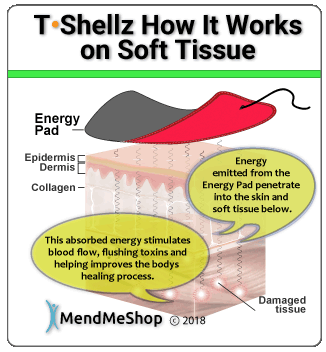 Energy emitted from the TShellz Wraps® increases blood flow in and around the application area - we call this "LEC Response" (Localized Enhanced Circulation Response). The objective of the TShellz Wrap® is to increase blood flow in these targeted areas, resulting in relaxation of the vessel walls. The vessels then gently expand, allowing for more nutrient rich blood flow along with extra oxygen to reach the damaged tissues. Plus, the enhanced blood flow helps in flushing waste and fluid build-up from the injury site - further enhancing the ability of the body to heal. With a TShellz Wrap® application, more blood begins to flow effectively to soft tissue within the body - for the length of the treatment and a short duration thereafter. Deep tissue needs the extra blood flow to heal as it is through the blood the body carries the oxygen and nutrients needed for proper and long-term healing. 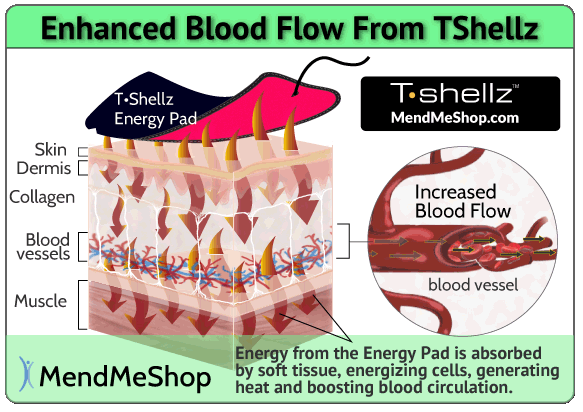 The best option we came across in our research to accomplish blood flow to soft tissue in the upper and lower legs is the TShellz Wrap®. Use of this device results in a dramatic increase in blood flow to the injured tissues in the treatment area - all in a non-invasive manner. Have you seen what happens when you add water to a flower wilted from drought? In essence, your injured muscle/tendon/ligament is much like a "wilted" flower; your body wants to heal its injury, but needs lots of nutrients to do it. Blood brings new life to your soft tissue by delivering healing nutrients and oxygen that are vital to your tissue. Without a good supply of blood, your soft tissue injury simply won't heal quickly, and as such increase your risk of reinjury and/or a chronic injury. Using a TShellz Wrap® will not expose you to the risk of causing further harm to soft tissue like you can when using rigorous exercise. The TShellz Wrap® accomplishes the goal of enhanced blood flow without the need for intensive exercise and as such reduces your risk of re-injury. Localized Enhanced Circulation ResponseThe intention of a TShellz Wrap® is to ease pain by dilating blood vessels, decrease stiffness by elongating soft tissue, improve blood circulation, and boost metabolism and enzyme activity. In stimulating localized blood flow to damaged soft tissue, you provide needed oxygen and nutrients to grow new collagen. In addition, you will experience a clearing of toxins and excess fluid build up from the injury site. Over the intermediate term, this helps to reduce incidents of swelling as trapped fluids will be whisked away - reducing pressure on blood vessels. Using the TShellz Wrap® is truly a unique experience. Within moments of applying the wrap, you can feel the sensation due to the increase in blood flow within the area. During a treatment, and for quite some time after you finish, the treated area will feel relaxed and warm. It's a very soothing sensation and extremely effective. Who Should Use the TShellz Wrap®We recommend the use of a TShellz Wrap®:
Increased Blood Circulation = Increased Healing CapabilityTShellz Wraps® contain a unique Carbon Fiber Energy Pad which is flexible and will shape to conform to your body. This Energy Pad emits a uniform wave of perfectly safe energy over its entire surface. This energy is absorbed by soft tissue in the treatment area, opening blood vessels, resulting in an increase in blood flow. Increased blood circulation is what your body needs to accelerate the healing of soft tissue and this is why we recommend the TShellz Wrap®. The Leg TShellz Wrap® is an FDA Registered Medical Device and is suitable for use in therapeutic clinics and FROM HOME. It is completely safe for people and patients to use for themselves. The technology found in a TShellz Wrap® has been used for decades in the worlds of professional and amateur sports - a contributing factor as to why athletes seem to recover from injuries so quickly. Have you ever wondered by an athlete can return to activity after 3 or 4 weeks following a tendon injury - while your average person takes much longer to return back to normal? The secret isn't really that much of a secret - it involves consistent treatments (meaning multiple times a day) using a treatment like the TShellz Wrap® to stimulate blood flow to the injured tissues. Most athletes have the luxury of using in-house facilities many times per day. How many us can afford the time and money to visit a clinic multiple times a day? Very few indeed. This is how you can gain some of the advantages that athletes enjoy in their injury recovery - by using a device like the TShellz Wrap® two or three times a day on a consistent basis. Consistent Treatments = Consistent And Long Term ImprovementWhat Else Makes the Leg TShellz Wrap® So Special?We believe the TShellz Wrap® to be one of the most effective home treatments to increase localized blood flow to soft tissue in and around the treatment area. We can promise that you will receive a product that is designed to be safe and does what it is supposed to do...quickly relieve pain and aid in the recovery from tendon, muscle and other soft tissue injuries. The unit plugs into a standard wall outlet to get its power. The nice thing about the power supply is that the same unit can be used in North America and overseas as well. It has the capability to operate between 110v and 230v. The TShellz Wrap® has a special signal controller that can be set for 3 different power levels of application (3=High, 2=Medium, 1=Low). The cord is long enough that you can sit or lie comfortably and watch TV, read or surf the net while you're using it. Treatments are max 30 minutes in duration and the device can be worn over clothing. This allows you to use the device at work, at home, or really anywhere you have access to an electrical outlet. When Should I Use My TShellz Wrap During the Day?The most common question we receive from individuals prior to purchasing is - how many times a day should I be using my TShellz Wraps® and when should I be using them? While treatment plans will differ for each individual and their specific injury, there are general guidelines that should be adhered to.
The TShellz Wrap® would then be used:
Stage 3 - In Between Treatments With TShellz Wrap®, Apply Our New Fast Acting Pain Relief Cream Called ARNICA INFUSIONDealing with aches and pains affecting the foot, ankle, leg, knee, hamstring, hip, back, arm, shoulder, elbow, wrist, or hand? If so, then applying the Arnica Infusion to any of these targeted areas will bring about fast relief from the pain and sore tissues. Simply apply a small amount of cream to the body and moments later, you will experience a soothing and comforting sensation over the area. Arnica Infusion is specially designed to relieve pain due to sore muscles and joints associated with arthritis, backaches, sprains, strains, and bruises. No matter if you are dealing with an acute injury, chronic pain, or a general "flare-up" - you will experience fast relief from pain and inflammation. 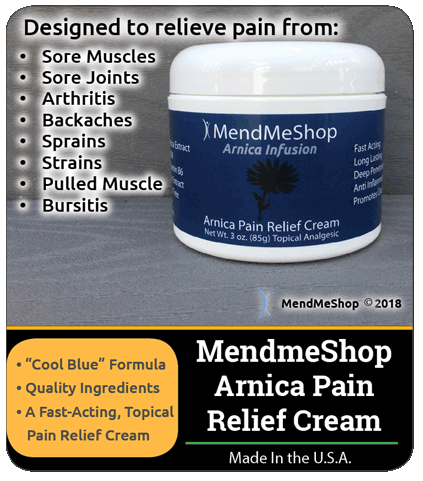 This is a product that many of our current MendMeShop customers asked us to develop. So we focused our time and resources over the past few years and came up, with we believe, will be one of more effective, fast acting, topical pain relief creams on the market. You are likely familiar with some of the standard topical agents on the market as most of our customers use them. The are mass marketed and even found in most department stores now. Well, we are here to say that Arnica Infusion goes many steps beyond what they offer. Made in the USA at an FDA registered manufacturing facility, you can be assured that Arnica Infusion is both safe and effective. We only source top grade ingredients while implementing strict quality control checks during every step of the production process. Expect the same high quality that MendMeShop customers have been accustomed to since we started the company in 2005. The "Cool Blue" formula is the perfect balance between the smooth application of a cream and the effective absorbing factor of a gel. It is not too thick and not too thin - just the right texture. Best of all, it feels very nice on the skin! Each application of Arnica Infusion feels so comforting and soothing, we are certain it will become an item you will not want to live without. Arnica Infusion IngredientsThe Arnica Infusion formula is based on a combination of scientific research and the use of high quality ingredients. The properties within the formula were chosen for their pain relief, anti-inflammatory, and soothing qualities. The acting ingredients within the formula include ones many of us are familiar with; along with ones that have not received a lot of publicity (only in research circles). Extensive testing resulted in a blending of ingredients that provides the most synergistic of benefits. The notable ingredients in the Arnica Infusion formula include:
Extensive quality control procedures during the manufacturing process ensure the ingredients and final product are both safe and effective. We would not stake our reputation on anything but the best. When Do I Apply the Arnica Infusion?While At WorkApply Arnica Infusion at work to help reduce acute discomfort associated with overuse of muscles and joints. No matter if you are in a physical demanding job or work within an office environment, you will be placing stress on different parts of the body and aches and pains will result. Before Or After Work, Sports, & ActivityIf you suffer from a sprained ligament, pulled muscle, strained tendon, or even bruising - apply Arnica Infusion for quick relief of the pain. Chronic Pain SufferingApplication of Arnica Infusion can be done up to a maximum of 4 times per day on a consistent basis to help bring about relief from various pains and aches. In-between Treatments With the TShellz Wraps®Follow up your TShellz and Cold treatments with an application of Arnica Infusion. Combine the pain relieving benefits of Arnica Infusion along with the healing benefits of the wraps to make your recovery go much more smoothly. Do not apply Arnica Infusion within a 2 hour timespan before a TShellz Wrap® treatment. Whether you decide to use the Arnica Infusion in conjunction with the TShellz Wrap® and other treatments - or if you decide to use the cream as a stand-alone product - you will not be disappointed with the results. We guarantee it.
You will notice significantly reduced pain and an incredible improvement in your leg, hip, and knee range of motion.  During your recovery, you may have to modify and/or eliminate any activities that cause pain or discomfort in your quadriceps until your pain and inflammation settle. The more dedicated you are with your treatment and rehabilitation, the faster you will see successful results! Learn More About Muscle Injuries & TreatmentsI want to learn more about Post-Surgery Recovery I want to learn more about muscle injury home treatment using the TShellz Wrap® I want to learn more about Ice & Heat: Which Is Better For Muscle Strains/Spasms? Do I Need Muscle Surgery?
|

